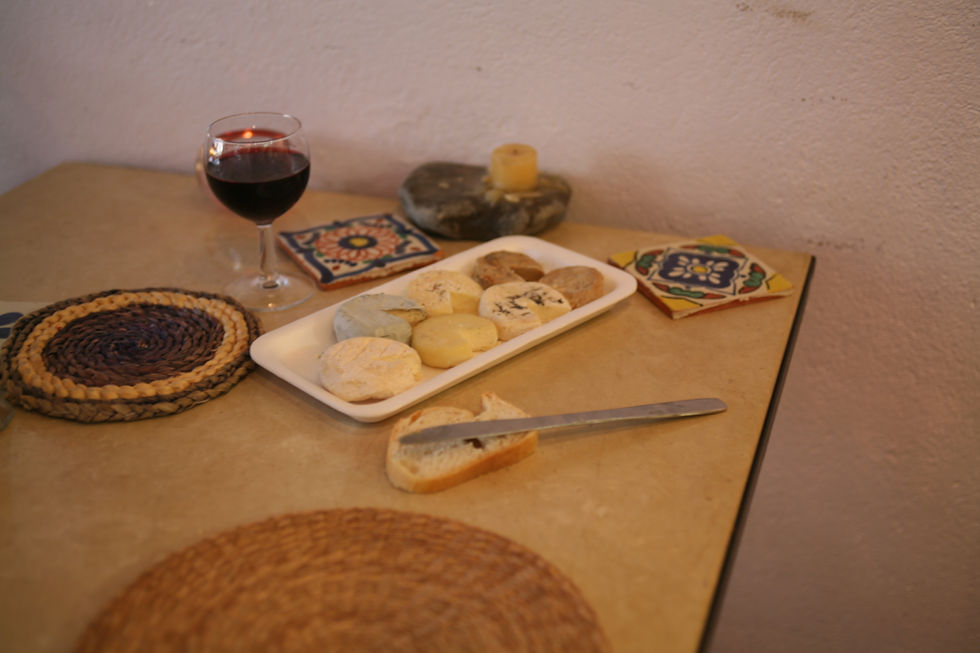(5) ENNSTALER STEIRERKAS
- C Demeyer
- Nov 20, 2021
- 3 min read
Updated: Jan 3, 2022
With Austria in the news this week, I thought that it would be nice to focus on a PDO cheese from this country. This is not a usual cheese, certainly not something that you would expect at first from this country. And this is good as it shows the diversity of cheese as foodstuff and the creativity of the people of this country.
You will find below a full description of the product, just note that presentation has evolved and you can find the product mainly in jar in most of the country and bordering areas.

Somewhere in Colmar in 2009 (sorry no Austrian picture in personal archive)
History:
Sour milk products were generally made by northern European tribes over two millennium ago, and then the Romans learnt about it. It is documented that this technique was used in the Enns Valley area from the middle ages. Butter production was important from the fifteenth century and progressively cheese was made with skimmed milk. This became unappreciated in nearby towns, mainly due to its strength of aroma and taste, but was well appreciated within the area of production due to its nutritious function; cheese production in Styria was documented in 1682. In the nineteenth century butter took precedence over any other dairy production, however the cheese kept on being made. In 1886 its traditional production was described by Karl Reiterer, and at the turn of the century many dishes were made using the cheese as ingredient, and were popular with the inhabitants. In 1901 a milk cooperative was formed within the Enns Valley, a dairy unit was built in 1925, and in 1950 it became prosperous again. The cheese applied for recognition in 2020 to the European Union in the form of PDO.
Area of production:
The area of production of Ennstaler Steirerkas is located within the State of Styria, in the north-west of it, part of the Republic of Austria; it is made up of 29 municipalities, called Liezen District. It is more or less in the middle of the country and is made up of the Enns Valley with tributaries, from Mandlinger Valley in the west to Altenmarkt. In the west part the highest point is the Dachstein Mountains, at 2995 metres of altitude, and the area is mountainous with slight inclination downwards to the east, Saint Gallen in below 600 metres. Except for the valleys the area has slow communication links due to the abrupt nature of the terrain, the flora is very abundant, largely in part due to the high rainfall, about 160 days a year as for frost. The climate is otherwise “Alpine continental”, cold but reasonable temperatures in the valleys with less than 2 months of summer, and good snow cover for more than three months of the year; the main valley has more fog cover throughout the year than the other valleys. The high pastures are of very high quality due to all of these factors.
Production method:
Milk for this cheese comes from within the area of production and is skimmed first. It can be organic, raw, or pasteurised, furthermore it can be done on high Alpine pastures. As for many cheese making process, the first step is to use acid bacteria, or lactic ferments, and the milk sours naturally with the result that a curd mass is produced; to improve efficiency it is heated in a, mostly, copper boiler. The fresh curd mass thus obtained is gathered in a cloth and put into a mould. Ingredients like salt and pepper can be incorporated before the next step is carried out, this requires cutting and mixing of the mass. It is then pressed to remove as much whey as possible, within the approved final water content target. It is then transferred to the maturing cellar when the cheese is turned every day, at least the first ten days, and is checked frequently and sometimes brushed to maintain cleanliness. It is commercialised when it has been checked for health and safety rules conformity.



Comments